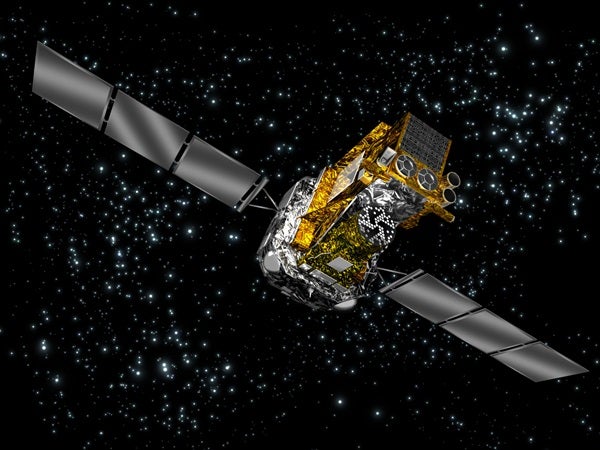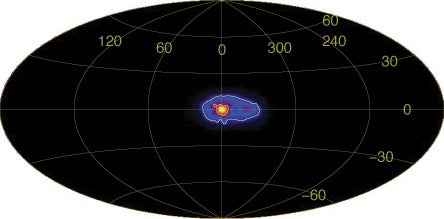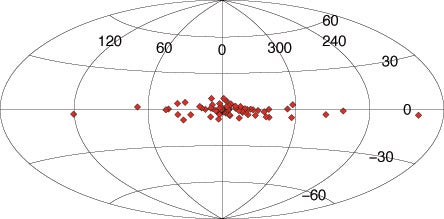Observations from the last 4 years from the European Space Agency’s Integral (INTErnational Gamma-Ray Astrophysics Laboratory) satellite may have cleared up one of the most vexing mysteries in our Milky Way: the origin of a giant cloud of antimatter surrounding the galactic center.
Integral found that the cloud extends farther on the western side of the galactic center than it does on the eastern side. This imbalance matches the distribution of a population of binary star systems that contain black holes or neutron stars, strongly suggesting that these binaries are churning out at least half of the antimatter, and perhaps all of it.
“The reported Integral detection of an asymmetry represents a significant step forward toward a solution of one of the major outstanding problems in high-energy astrophysics. I think I can hear a collective sigh of relief emanating from the community,” says Marvin Leventhal, a University of Maryland professor emeritus and a pioneer in this field.
The cloud itself is roughly 10,000 light-years across, and generates the energy of about 10,000 Suns. The cloud shines brightly in gamma rays due to a reaction governed by Einstein’s famous equation E=mc^2. Negatively charged subatomic particles known as electrons collide with their antimatter counterparts, positively charged positrons. When electrons and positrons meet, they can annihilate one another and convert all of their mass into gamma rays with energies of 511,000 electron-volts (511 keV).
In recent years, some theorists championed the idea that particles of dark matter were annihilating one another, or with atomic matter, producing electrons and positrons that annihilate into 511-keV gamma rays. But other scientists remained skeptical, noting that the dark matter particles had to be significantly lighter than most theories predicted.
“The Integral results seem to rule out dark matter as the major source of the gamma rays,” says the paper’s second author Gerry Skinner, who currently works at NASA’s Goddard Space Flight Center, Skinner is a co-investigator of Integral’s SPI (SPectrometer for Integral) instrument, which made this discovery.
Integral found certain types of binary systems near the galactic center are also skewed to the west. These systems are known as hard low-mass X-ray binaries, since they light up in high-energy (hard) X-rays as gas from a low-mass star spirals into a companion black hole or neutron star. Because the two “pictures” of antimatter and hard low-mass X-ray binaries line up strongly suggests the binaries are producing significant amounts of positrons.
While Integral’s discovery clears up one mystery, it raises a new one. Scientists don’t understand how low-mass X-ray binaries could produce enough positrons to explain the cloud, and they also don’t know how they escape from these systems. “We expected something unexpected, but we did not expect this,” says Skinner. The antimatter is probably produced in a region near the neutron stars and black holes, where powerful magnetic fields launch jets of particles that rip through space at near-light speed.
NASA’s Gamma-ray Large Area Space Telescope (GLAST), scheduled to launch in 2008, may help clarify how objects such as black holes launch particle jets. Conceivably, it could even detect higher-energy gamma rays from heavier types of dark matter particles annihilating one another.












